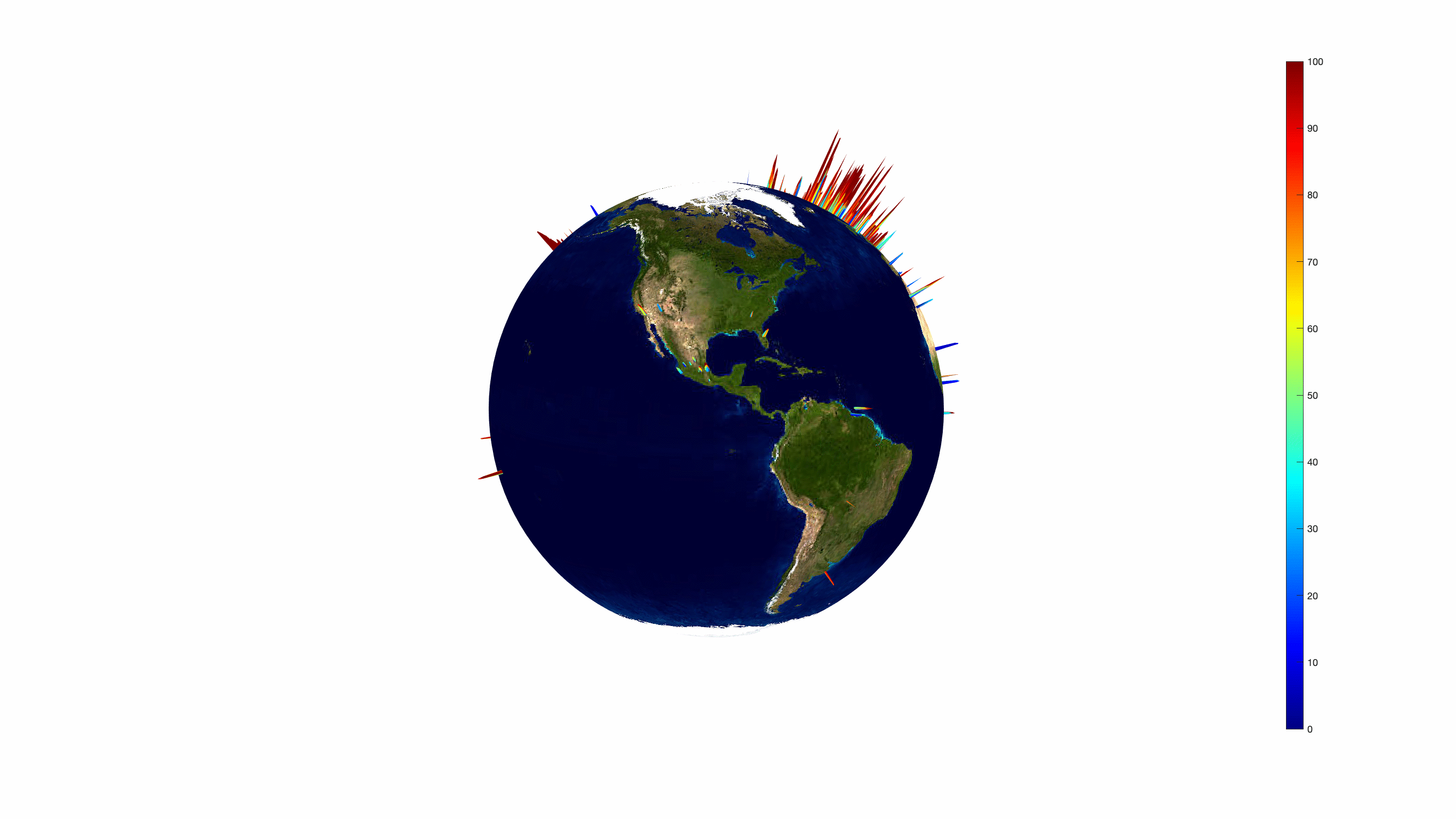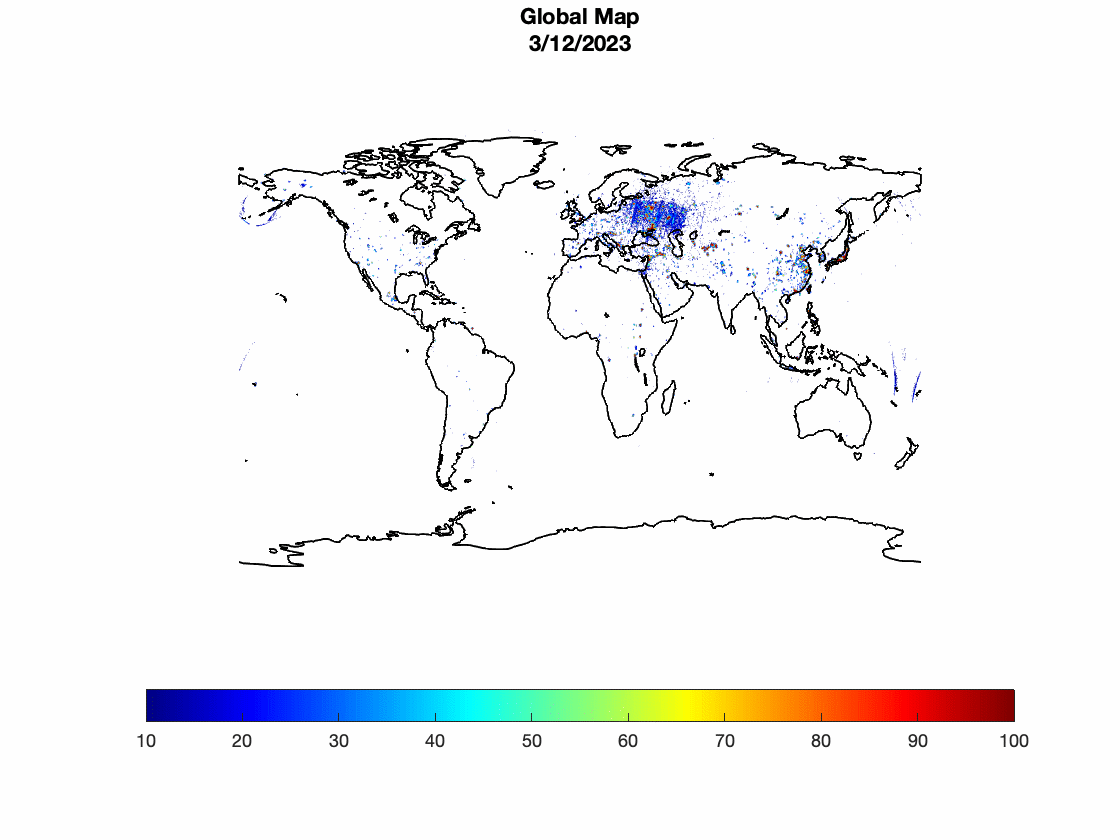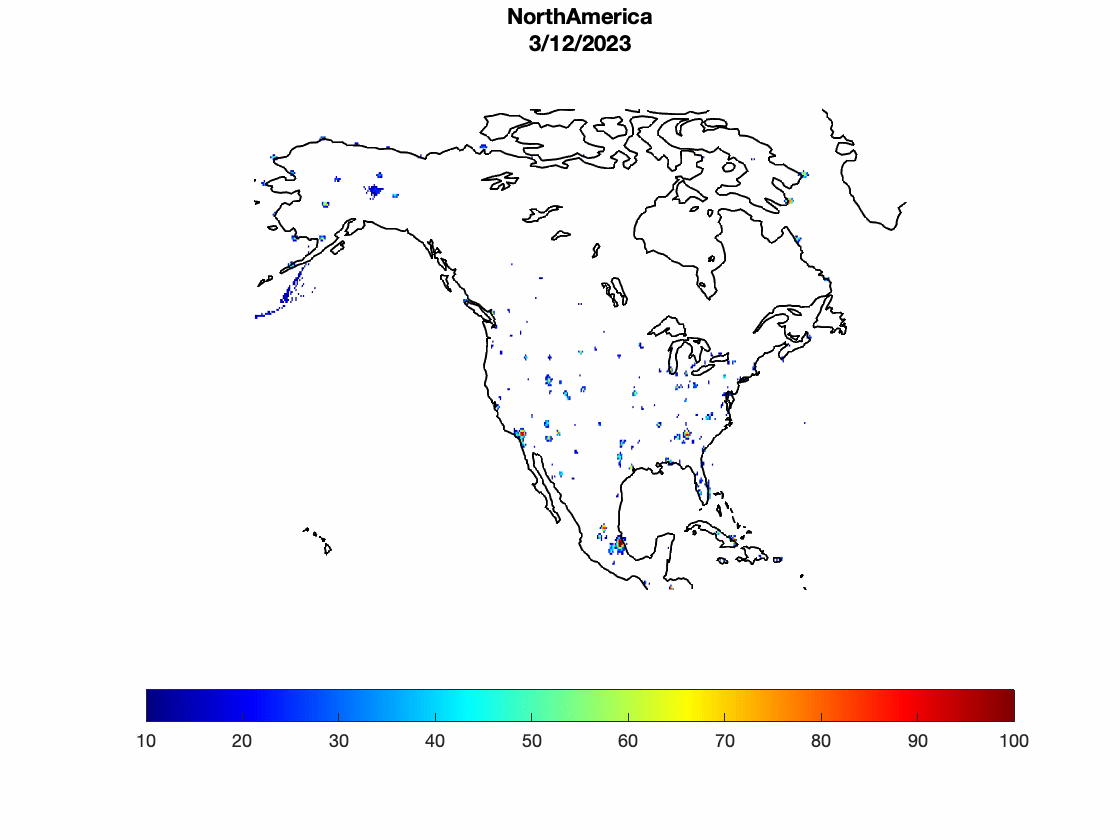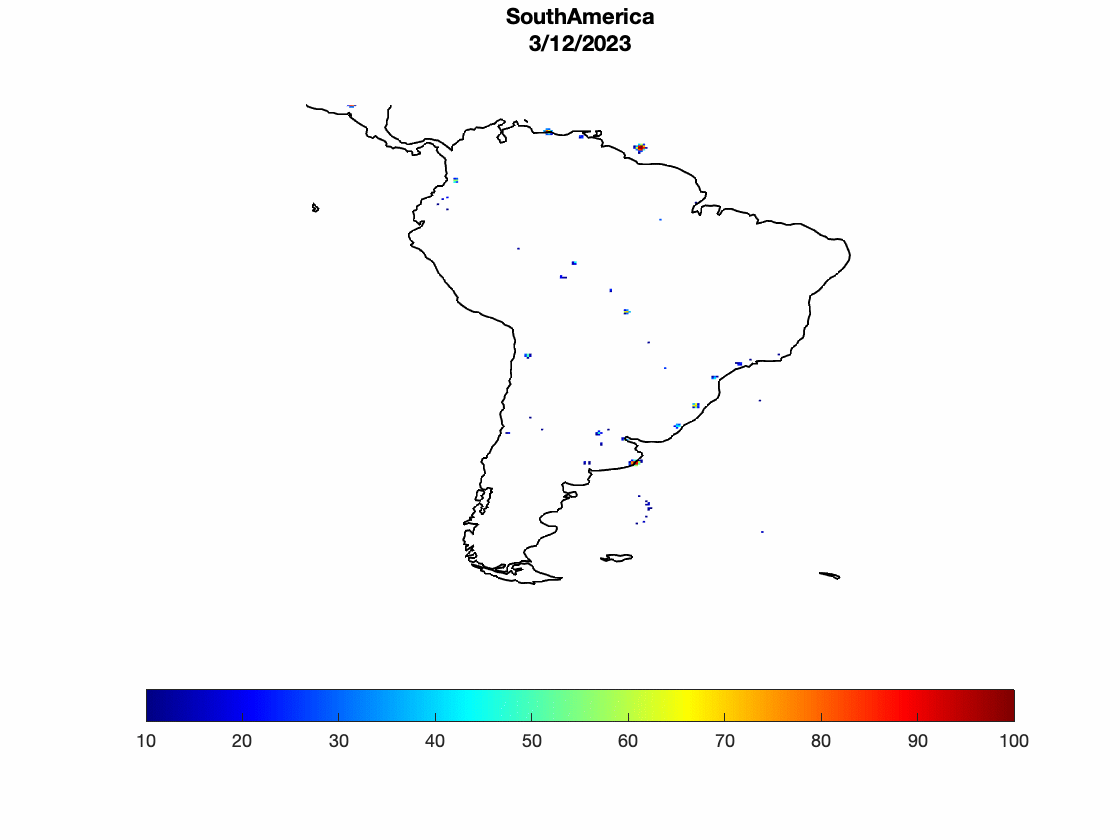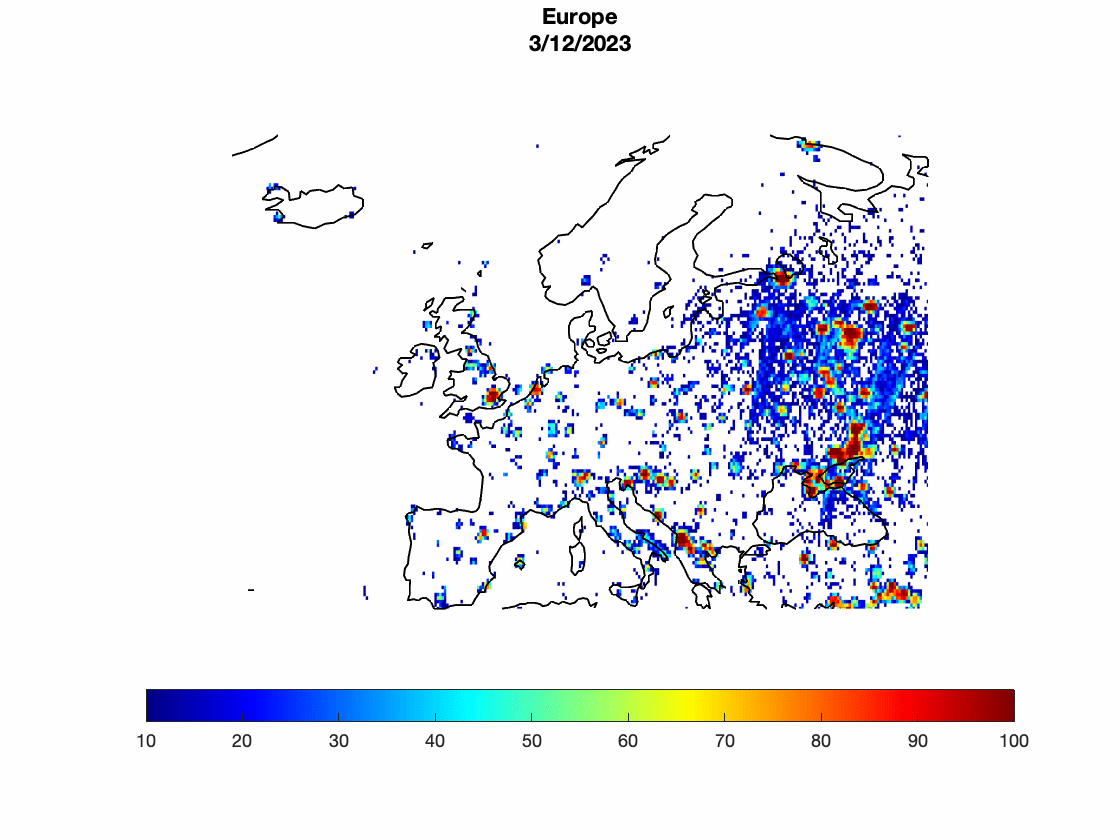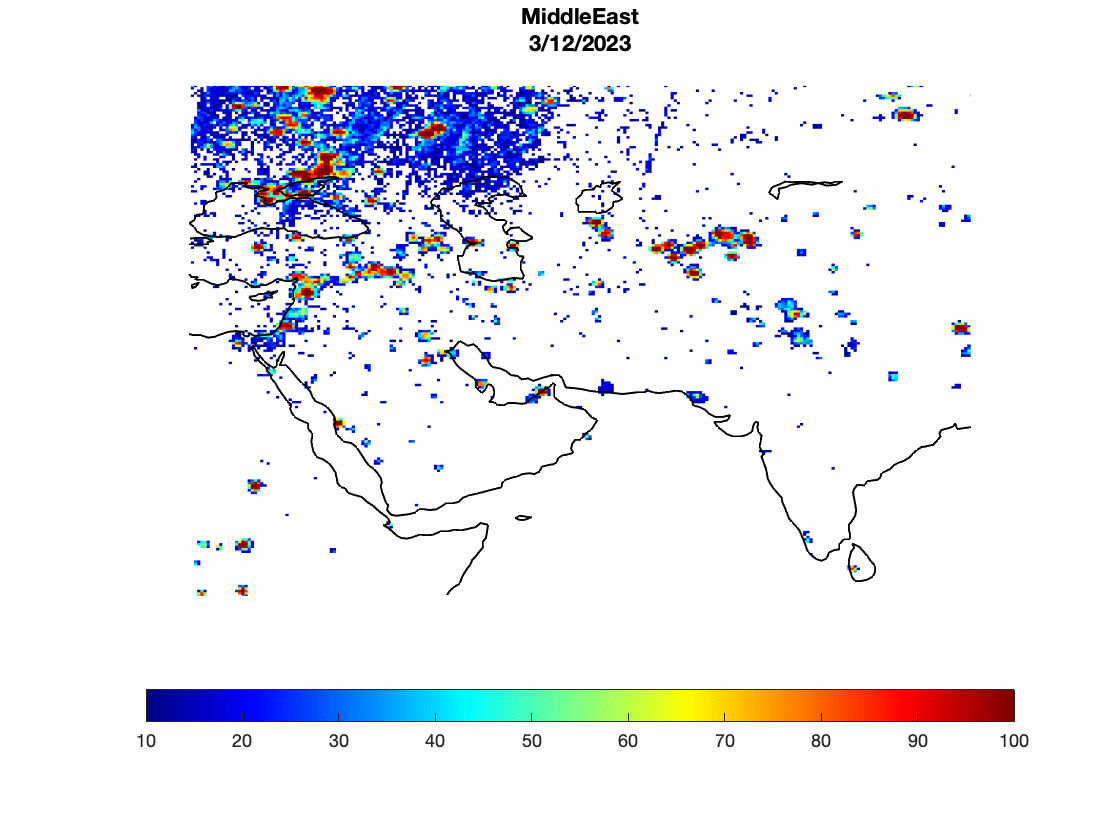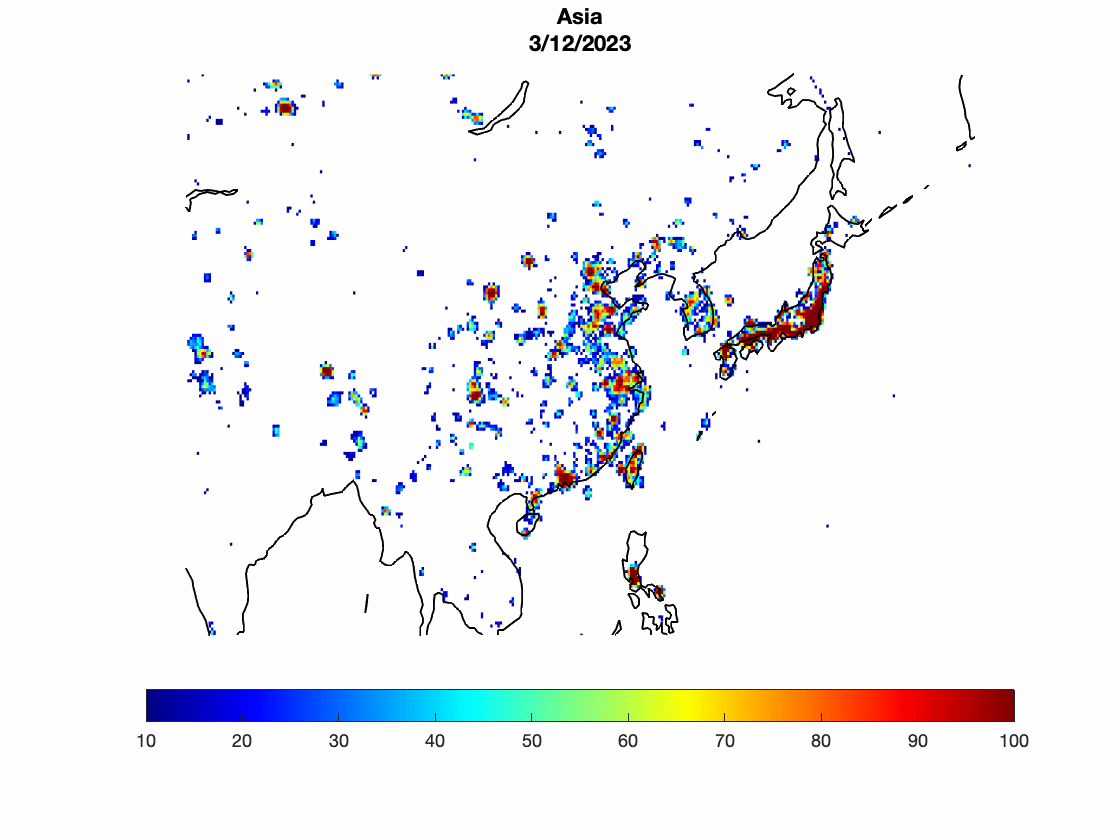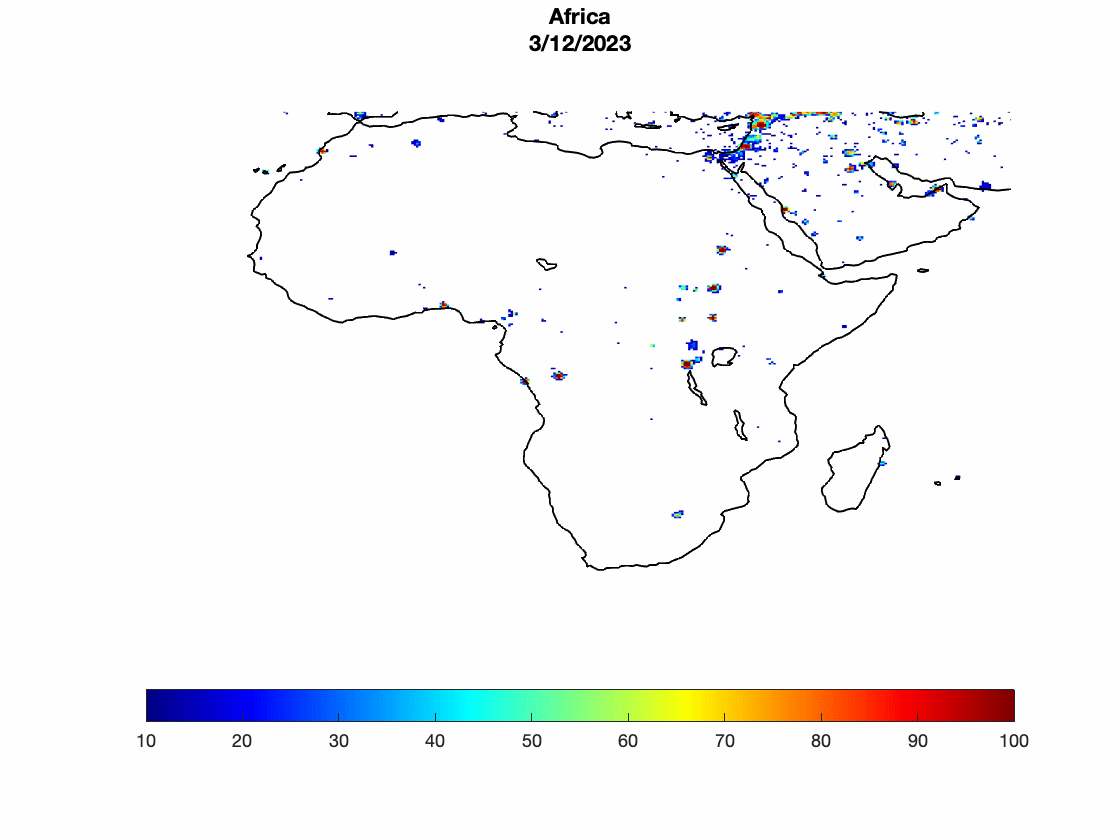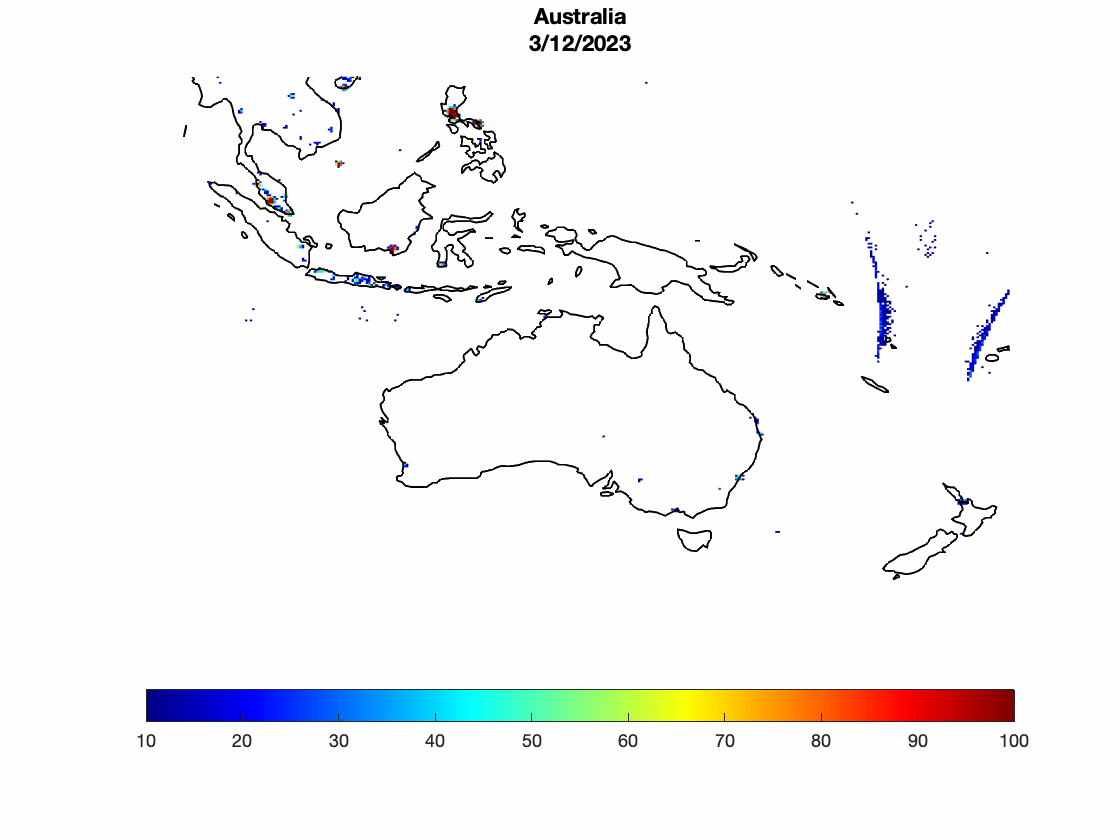Global map showing SMAP Radio Frequency Interference during the month of March and April 2023. The height of the bar indicates the maximum RFI contribution to the antenna temperature (Kelvin) observed in horizontal polarization and the color indicates the persistence of the RFI averaged over a four week period (defined below)
RADIO FREQUENCY INTERFERENCE
SMAP has one of the most advanced Radio Frequency Interference (RFI) detectors currently in orbit. Even though the SMAP mission measures the brightness temperature of the Earth in the protected 1400-1427 MHz spectrum, SMAP measurements are still corrupted by RFI globally. This is an increasing problem for most microwave remote sensing missions, with limited spectrum available for scientific use and increased demand and competition for access. SMAP can detect and filter RFI at the cost of increased radiometric noise due to data excision. The figures below show the global and regional RFI persistence observed over various locations of the world over a period of one month from June to July 2021.
SMAP observed RFI levels are defined as the difference in Kelvin between the measured antenna temperatures before and after RFI detection and filtering. RFI persistence is determined first by gridding SMAP observed RFI levels onto a 0.25 deg x 0.25 deg map. The persistence percentage in a given pixel is then defined as the ratio of the number of measurements in that pixel whose RFI level exceeds 5 Kelvin divided by the total number of SMAP measurements averaged over a 4 week period. As an example, red colors in the Figures indicate persistent RFI observed 100% of the time over the observation period. The maps shown below use data in horizontal polarization.
For historical SMAP RFI data, please see: SMAP radiometer RFI
RFI - Global
RFI - North America
RFI - South America
RFI - Europe
RFI - Middle East
RFI - Asia
RFI - Africa
RFI - Australia
These images are generated by Dr. Alexandra Bringer at NASA Goddard Space Flight Center. Please contact her for further questions.
References
Piepmeier, J.R., J.T. Johnson, P.N. Mohammed, D. Bradley, C. Ruf, M. Aksoy, R. Garcia, D. Hudson, L. Miles, and M. Wong (2014). Radio-frequency Interference Mitigation for the Soil Moisture Active Passive Microwave Radiometer, IEEE T. Geosci. Remote Sen. 52 (1), 761-775. IEEE
Piepmeier, J.R., P. Mohammed, De Amici, G., Kim, E., Peng, J., and Ruf, C. (2016). Soil Moisture Active Passive (SMAP) Project, Algorithm Theoretical Basis Document, SMAP L1B Radiometer Brightness Temperature, Data Product: L1B_TB (Rev. B), NASA Goddard Space Flight Center, 83p. IEEE
Bringer, A., Johnson, J.T., Soldo, Y., Le Vine, D.M., Mohammed, P., Misra, S., de Matthaeis, P. and Piepmeier, J.R., 2021. Properties of the RFI Environment at 1400–1427 MHz as Observed by the Soil Moisture Active/Passive Mission Microwave Radiometer. IEEE Journal of Selected Topics in Applied Earth Observations and Remote Sensing, 14, pp.7259-7267
Soldo, Y., Le Vine, D.M., Bringer, A., de Matthaeis, P., Oliva, R., Johnson, J.T. and Piepmeier, J.R., 2018. Location of radio-frequency interference sources using the SMAP L-band radiometer. IEEE Transactions on Geoscience and Remote Sensing, 56(11), pp.6854-6866.
Mohammed, P.N., Aksoy, M., Piepmeier, J.R., Johnson, J.T. and Bringer, A., 2016. SMAP L-band microwave radiometer: RFI mitigation prelaunch analysis and first year on-orbit observations. IEEE Transactions on Geoscience and Remote Sensing, 54(10), pp.6035-6047.
Bringer, A., Daehn, M., Johnson, J.T., Soldo, Y., Le Vine, D.M., de Matthaeis, P., Piepmeier, J.R. and Mohammed, P., 2018, July. SMAP mission: Changes in the RFI environment. In IGARSS 2018-2018 IEEE International Geoscience and Remote Sensing Symposium (pp. 3754-3757). IEEE.
Ruf, C.S., S. M. Gross and S. Misra, "RFI Detection and Mitigation for Microwave Radiometry with an Agile Digital Detector," IEEE Trans. Geosci. Remote Sens., vol. 44, no. 3., 694-706, March 2006.
S. Misra, P. Mohammed, B. Guner, Ruf, C.S., J. Piepmeier, and J. Johnson, “Microwave radiometer Radio Frequency Interference detection algorithms: A comparative study,” IEEE Trans. Geosci. Remote Sens., vol. 47, no. 11., 3742 - 3754, 2009



